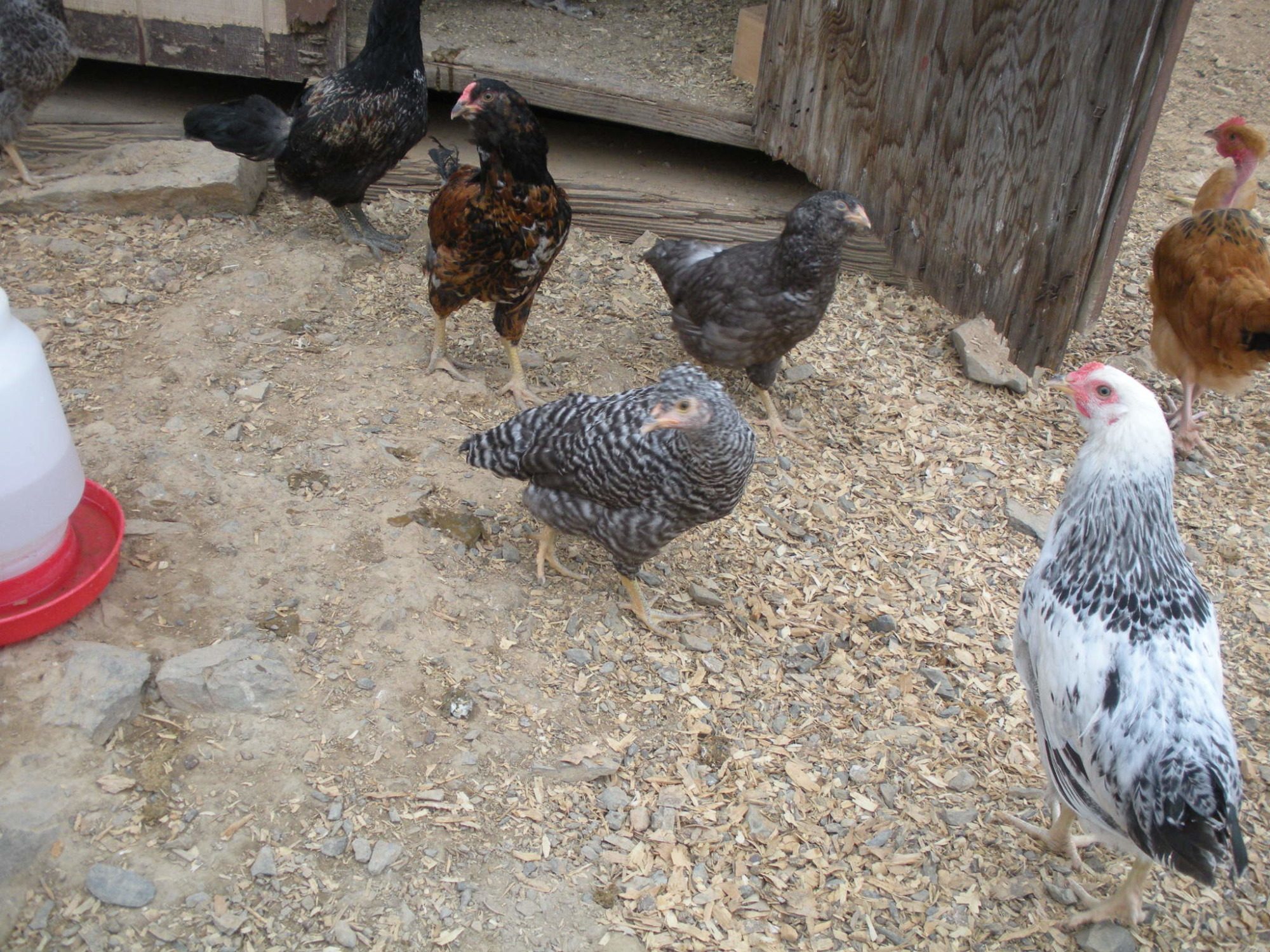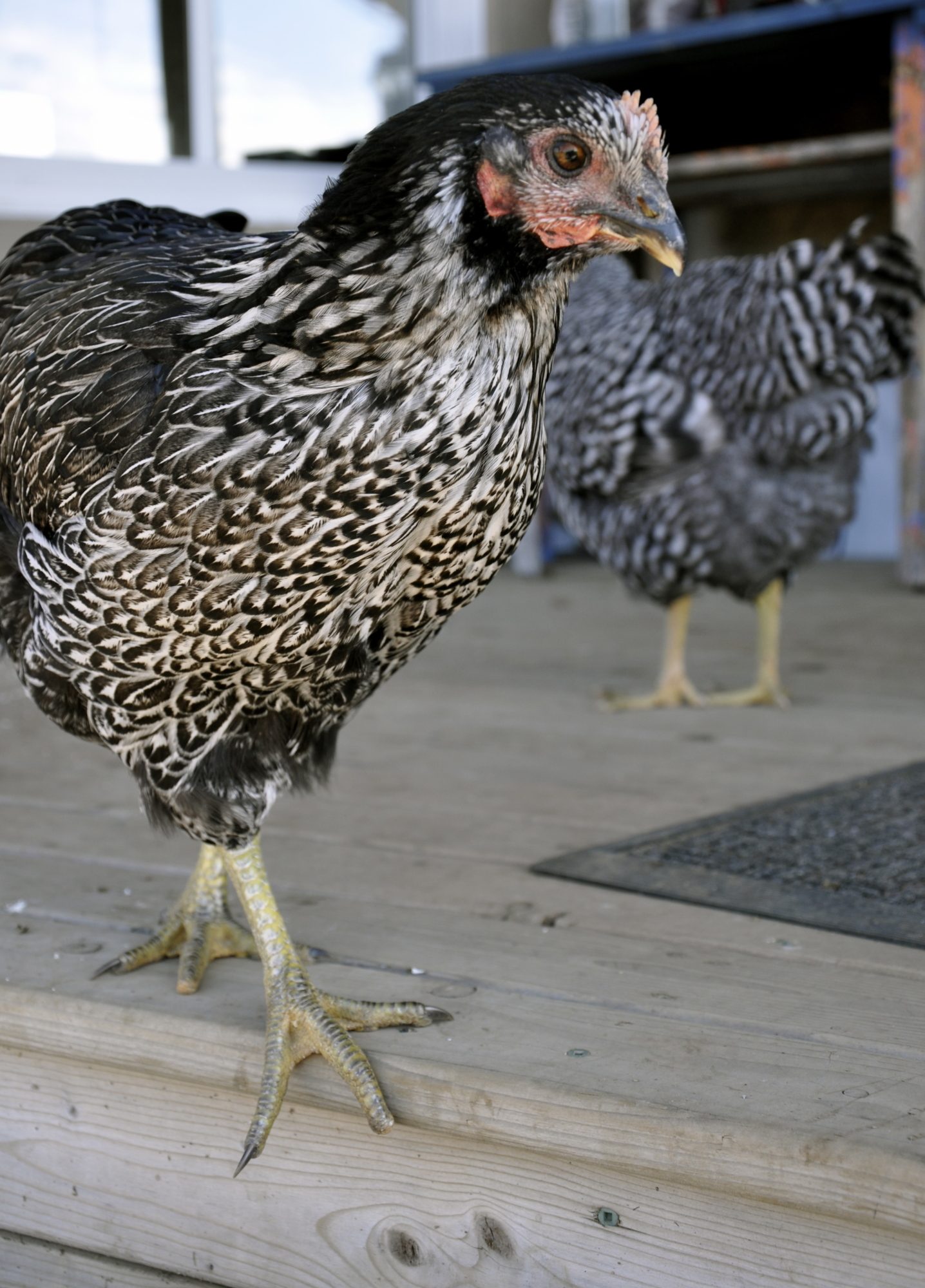Thanks! We can't wait to see what color eggs they all lay!72Lark, you have all pullets, and very pretty ones too!
dftkarin, it's still pretty early to guess their gender. But when they reach around 8 weeks old you should be able to see a lot of color in their combs if either is a cockerel, and around that time you may be able to see the dark red coming in on the shoulders. For the pointy feathers, males get pointed hackles and saddles -- there's a good diagram here showing where those are located. They usually start coming in on the cockerels around the 3 month mark.
Navigation
Install the app
How to install the app on iOS
Follow along with the video below to see how to install our site as a web app on your home screen.
Note: This feature may not be available in some browsers.
More options
You are using an out of date browser. It may not display this or other websites correctly.
You should upgrade or use an alternative browser.
You should upgrade or use an alternative browser.
Easter Egger Sexing "tips and tricks" *Pictures Included*
- Thread starter Morgan7782
- Start date
- Mar 29, 2012
- 137
- 29
- 108
She could be, but she is not likely to lay a colored egg if she is. My first thought is a Penciled something, maybe a rock? She may be a cross, her marking are not quite right for a penciled. She is pretty. Does she have a middle toe nail? I don't see one on either foot....
I've been told by a reputable breeder/judge/ someone with a degree in animal science that comb type has nothing to do with coloured eggs. He has a NN project with birds that lay green eggs, and half of them have single combs, yet all lay green eggs. There is nothing genetic linking the two. - according to him. Jamie Carson.She could be, but she is not likely to lay a colored egg if she is. My first thought is a Penciled something, maybe a rock? She may be a cross, her marking are not quite right for a penciled. She is pretty. Does she have a middle toe nail? I don't see one on either foot....
http://nsac.ca/alumni/profiles/2007/May/Jamie.asp
Comb doesn't have anything to do with egg color. Real/pure Araucanas & Ameraucanas both have pea combs (& lay blue eggs). There are several other breeds with peas that lay brown eggs though (ie- Brahmas)... are actually more pea breeds that DON'T lay blue/green. The term Easter Egger really means nothing aside from egg color, as isn't a breed. I have some pure Ameraucana Btms that I'll be showing this fall... so people will get to see what real ones look like. I've prefered pea combs on my "NN layers", as are more cold hardy. I had to use a single-combed male this year though, as is all I had. I'll keep 2-3 pea combed ckls for next year though.
JC
Last edited:
Quote: I respectfully disagree with him....... Not saying it can't happen that they will lay a color eggs, but much less likely. I have not had any EE with straight combs lay a colored egg yet. I think there is a 3% chance a straight comb will lay a blue egg and I think that would even be lower with EE since they are such mixes. I think when you are dealing with pure breeds and you get a straight comb that pops up.... that bird MIGHT lay a colored eggs, but more on the green side I would think. I can let you know.... I have some Leghorn crosses with straight combs and when they start laying we will see what i get, white or blue. I am not holding out hope, but we will see.
https://www.backyardchickens.com/t/150601/comb-type-egg-color#post_1821695
Can you prove the genetics that links a pea comb with a coloured egg?I respectfully disagree with him....... Not saying it can't happen that they will lay a color eggs, but much less likely. I have not had any EE with straight combs lay a colored egg yet. I think there is a 3% chance a straight comb will lay a blue egg and I think that would even be lower with EE since they are such mixes. I think when you are dealing with pure breeds and you get a straight comb that pops up.... that bird MIGHT lay a colored eggs, but more on the green side I would think. I can let you know.... I have some Leghorn crosses with straight combs and when they start laying we will see what i get, white or blue. I am not holding out hope, but we will see.
https://www.backyardchickens.com/t/150601/comb-type-egg-color#post_1821695
If a peacomb signified blue or green eggs, wouldn't brahmas be laying them? And for that matter, why are peacombed EEs not always laying coloured eggs?
I think I would believe someone who has went to university and got a degree and bred chickens for 30 + years over someone who hasn't had all that experience.
Not calling you out at all. He has single combed Naked Necks that are laying a blueish green egg.
Quote: I didn't say they were liked they are in nearly the same location genetically and USUALLY are passed on together. All the genetic wiz's say they are connected. I know there are breeds that are straight combed that lay blue eggs. But Pea Comb genes are closer to the blue egg gene and travel together more often than not.
I am NOT a genetic person so NO I can't Prove anything.... not really that interested in genetics. Only know enough to breed what I am looking for in chickens.
BTW Brahmas... don't have pea combs.
The question was if the bird was an EE and IDK....
I have a friend that has straight comb Leghorn crosses that lay blue eggs..... It happens, just not often.
Last edited:
Yes Brahmas DO.I didn't say they were liked they are in nearly the same location genetically and USUALLY are passed on together. All the genetic wiz's say they are connected. I know there are breeds that are straight combed that lay blue eggs. But Pea Comb genes are closer to the blue egg gene and travel together more often than not.
I am NOT a genetic person so NO I can't Prove anything.... not really that interested in genetics. Only know enough to breed what I am looking for in chickens.
BTW Brahmas... don't have pea combs.
The question was if the bird was an EE and IDK....
I have a friend that has straight comb Leghorn crosses that lay blue eggs..... It happens, just not often.
Brahma Chicken
Often referred to as the “King of All Poultry”, the Brahma chicken is appreciated for its great size, strength, and vigor. By 1901 some individual birds were documented to have reached the incredible weights of 13-14 pounds for hens and 17 to 18.25 pounds for cocks – though 10 pound hens and 12 pounds cocks were the rule. This breed, together with the Cochin, fueled what became known as “Hen Fever” – a national obsession for poultry that hit both America and England around 1850.
Brahmas are large chickens with feathers on shanks and toes, pea comb, smooth fitting plumage with dense down in all sections, and broad, wide head with skull projecting over the eyes – termed “beetle brow.” They come in three color varieties – the Light, the Dark, and the Buff. Both the Light and the Dark Brahma were accepted to the American Standard of Perfection in its first printing in 1874. Though from the beginning some buff specimens were produced periodically, it was not until 1924 that the Buff Brahma was accepted as standardized as well.
From ALBC
http://albc-usa.org/cpl/brahma.html
I can't imagine how a comb could predict egg colour. It just does not make sense to me.
The pea comb is a medium-size comb. It features three ridges running lengthwise from the top of the beak to the top of the head, with the middle ridge a bit higher than the others.
Araucanas, Ameraucanas, Aseels, Brahmas, Buckeyes, Cornish, Sumatras and Shamo all have pea combs.
BYC
Only two of those breeds above lay coloured eggs. I would think the gene for egg colour would be separate from the gene for the type of comb.
New posts New threads Active threads
-
Threads with more replies in the last 15 days
-
-
-
Prettiest chicken breeds and plumage color
- Started by Beau plus penny
- Replies: 47
-
-
-
×



